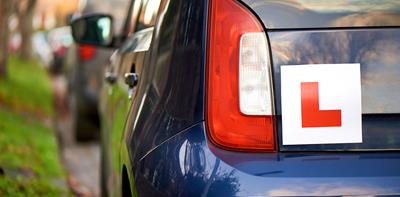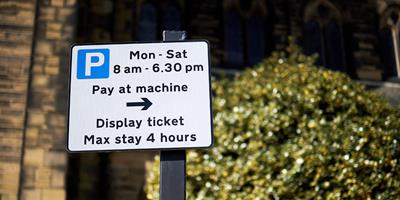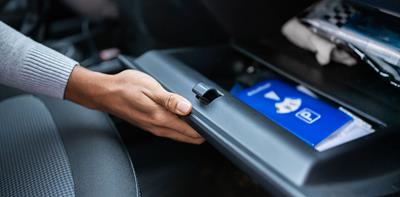
Being able to park well is an essential skill for any driver. It’s a great feeling when you’re able to nab that last spot on the street right outside your home, or by the entrance to the shop. But if you’re less confident at parking, you might find yourself forfeiting convenience in favour of an bigger spot.
Parallel parking, forward bay parking and reverse parking are the three main types of parking, and you’ll have been asked to do at least one of them during your practical driving test.
Easy as hack
There are many places it's illegal to park, so avoid getting fined by finding checking you are allowed to park in the space.
At a glance
Three things to remember when parking your car:
- Take your time
- Always check your mirrors and cameras
- Don’t forget to straighten your car up
How to park a car – step-by-step instructions
How to parallel park
- Make sure the space is big enough. Usually, you won’t have a lot of extra space to work with when it comes to parallel parking, so make sure the space is big enough for your car.
- Signal and stop. You need to let other drivers know that you plan to park.
- Align your car. Align the centre of your passenger side window with the front of the car that’s in front of the vacant space.
- Check your mirrors and blind spots. Always check for oncoming traffic, pedestrians and cyclists before attempting to park.
- Slowly reverse. Look over your left shoulder and through the rear window. Stop when your back wheels are aligned with the car in front of your space.
- Full turn to the left.
- Slowly reverse. Use the left mirror to check the position of the kerb and the rearview mirror to check how close you are to the vehicle behind you.
- Stop when you see the kerb. You’ll see the kerb in your nearside mirror. Make sure you’re also clear of the car in front.
- Lock your steering wheel. Lock your steering wheel fully to the right to bring your wheels in towards the kerb.
- Straighten up. Straighten your car up until you’re in line with the cars in front and behind you.
How to forward bay park
- Make sure the bay is big enough. Don’t attempt to park if the space isn’t big enough, you may accidentally hit another vehicle.
- Position yourself on the left side of the bay. This is the simplest way to forward bay park. You should leave yourself as big a turning circle as possible.
- Check your mirrors and blind spots. Always check for oncoming traffic, pedestrians and cyclists before attempting to park.
- Align your car. Pull forward until your wing mirror is in line with the first line of the bay you’re pulling into.
- Lock your wheel. Full lock your wheel and pull into the space slowly.
- Straighten up. Straighten your car up until it’s directly in the centre of the bay.
How to reverse park
- Find a space. Once you’ve found a space, indicate to let others know you’re turning into it.
- Check for oncoming traffic, pedestrians and cyclists.
- Drive two spots. Go two spots past the space you want to reverse into.
- Leave about a 1m distance.
- Align your car. Line up your rearview mirror with the outside line of the second space over.
- Reverse. Full lock your wheel in the direction of the space you’re parking in and reverse slowly into it.
- Realign. When your rear bumper is halfway into the space, straighten your wheel as you finish reversing into the space.
- Straighten up. Straighten your car up until it’s directly in the centre of the bay.
Many modern cars also have parking sensors or cameras installed to help with parking.
Our top parking tips
Take it nice and slow
One really important tip when it comes to parking is not to rush it.
Rebecca Ashton, head of policy and research at IAM RoadSmart, says: “The main thing with parking is to do it slowly. The slower you go, the less chance you've got of it going wrong; and you can stop and correct it before it does. Go slow, take your time. Make sure that you haven't got any other distractions. I turn down the radio when it comes to parking so I can concentrate fully.”
She adds: “Most parking mistakes are made when drivers are manoeuvring too fast. They misjudge things, and don’t take time to correct their steering.”
Correct yourself
Approaching parking too quickly might leave your car in an awkward position. Take time to try to fix any mistakes, especially if you’ve parked across the lines of a bay (you can get fined for this).
Rebecca advises: “I think a major error people make is that they don't correct themselves. They just leave the car as it is, even if it’s at a crooked angle. Or you might be up on the kerb – or even too far from it – after a parallel park. Never be shy about sorting it out and correcting it.”
Don’t feel pressured
Many drivers feel the watchful eye of other drivers and pedestrians when they try to park. But don’t rush because you think they’re getting impatient. Remember most drivers have had a difficult parking experience and being hasty is more likely to lead to mistakes.
“If you're going into a tight spot, don't feel embarrassed about getting out and having a look to make sure that you're okay,” says Rebecca. “And if you're not okay, get back in the car and adjust your position until it's right.”
Ask for help
Having other people around can often be a good thing. Rebecca says: “Never be afraid to get somebody to help. If you trust that person and you need to be guided into a space, it's certainly not embarrassing to have somebody give you a little bit of a hand to guide you.”
“If you've got the help there, why not use it? Although you should make your own observations too,” she adds.
Choose the right spot
For new drivers in particular, it’s important to carefully choose a parking space that won’t pose too much of a challenge.
Rebecca says: “If it's something that you're practicing or that you're unsure of, avoid busy places. Because even though people are quite happy to wait, when you're actually doing it and you're reverse parking, perhaps with somebody there, you feel extra pressure. Try to choose a quiet location to practice in.”
Park facing the right direction
It may not always be possible, but it's always a good idea to try and park with your car facing the way your plan to drive. At night, this is a legal requirement in the UK. It’s also safer and easier when you’re pulling out of the space later.
Where can and can’t you park
| Can Park | Can't Park |
|---|---|
|
|
How to find a good parking spot
You can use Google maps to find car parks close to your destination. It may even show you smaller ones you don’t know about which are likely to be less popular.
There are also parking apps you can use. Some people even rent out their driveways for other people to park in. This is particularly popular in big cities like London and near sport and music venues. Your Parking Space is a popular choice for this.
FAQs
Should you park facing oncoming traffic?
The Highway Code states that you must not park facing oncoming traffic at night, unless in a recognised parking bay. It’s very dangerous as it obstructs the view of oncoming traffic.
What way should you face your wheels when parking uphill?
When parking uphill your wheels should be turned away from the kerb. Your wheels should turn into the kerb if you’re parking downhill.
Should you use your handbrake when parking?
Yes. You should pull up your handbrake, or press the handbrake button, once parked.
Should you put your car in neutral before pulling the handbrake?
Yes. You should put your car in neutral before turning it off. Then engage the handbrake and/or put your car in park mode if it's an automatic.
You can find out more about our car insurance here.


